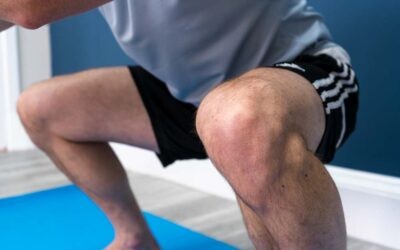What everyone who has a suspected frozen shoulder ought to know – but nobody takes the time to explain it to them.
Do you suffer from pain in your shoulder a suspect it is a frozen shoulder? Has this developed gradually over time and are you over 40 years old? Do you find it hard putting your arm into a coat, getting dressed, or reaching to get your seat belt? Has it gradually got worse despite resting it and you ant even recall ever injuring it? Does it disturb your sleep when you lie on that side? If so, you could have a frozen shoulder. This can be very frustrating and confusing, you had hoped it would resolve just the same way it appeared but it’s not. As there is no real cause it is difficult to understand why getting dressed, putting on a jacket or coat, reaching into the cupboard or simply lying on your side is so uncomfortable and painful. Gradually the pain becomes worse and simple chores around the house become nearly impossible. You go to the GP and get given some pain relief but this doesn’t really help. This is a story we hear a lot.
We understanding how confusing, and frustrating this condition can be. That’s why we have put together this advice book to help you make more sense of what is going on with your shoulder. It has been divided into sections, describing your shoulder, what we know about frozen shoulder and your treatment options.

What exactly is a ‘frozen shoulder’?
Typically the joint is stiff and initially painful, often starting without an apparent cause.
The loose bag (capsule) around the shoulder joint becomes painful and sometimes inflamed. The bag then appears to tighten or shrink. This tightening combined with the pain restricts the movement.
How common is a frozen shoulder?
It is most common in people between the ages of 40 and 70 years and has been estimated to affect at least one person in 50 every year.
Fact: A staggering ONE Million people will have a frozen shoulder each year.
About 10% of people may develop frozen shoulder in the other shoulder within 5–7 years of the first one. However it tends to resolve more quickly than the first.
It was previously called the “50 something shoulder” and medically it is often referred to as “adhesive capsulitis”. This basically sums it up, as it is basically a shoulder that is stuck with some inflammation, pain, limited movement and happens at a certain age category.
Although it is widespread, it is a difficult condition to treat. We hope that this information sheet will help to explain what we know about it so far.
Why does a frozen shoulder occur?
A primary frozen shoulder is when the exact cause is not known. It is more common in people with diabetes and with a thyroid gland problem. About 15% of patients link it to a minor injury to the shoulder.
A secondary frozen shoulder can develop if the shoulder area is kept still for some time, for example, after a stroke or heart attack. It can also occur after major injury or surgery to the shoulder.
Some experts think the inflammation starts with a problem in the shoulder itself, others feel it is related to factors away from the shoulder (e.g. stiff neck, genetic component, gene deficiency, or linked to certain diseases or hormonal changes).
Research is continuing to try and answer some of these questions.
What tests may be done?
The main way we diagnose the problem with your shoulder is from what you tell us and from our examination. Sometimes an X ray will be done to check there are no bone changes in your shoulder joint but this does not help confirm your diagnosis and is very rarely required.
How long does a frozen shoulder take to heal?
There are 3 main phases
1) Painful phase (which can last from 2 to 9 months)
The pain often starts gradually and builds up. It may be felt on the outside of the upper arm and can extend down to the elbow and even into the forearm. It can be present at rest and is worse on movements of the arm. Sleep is often affected, as lying on it is painful or impossible. During this time movements of the shoulder begin to be reduced.
2) Stiff phase (which can last from 4 to 12 months)
The ball and socket joint becomes increasingly stiff, particularly on twisting movements such as trying to put your hand behind your back or head. These movements remain tight even when you try to move the shoulder with your other hand or someone tries to move the shoulder for you.
It is the ball and socket joint which is stiff. The shoulder blade is still free to move around the chest wall, and you may become more aware of this movement.
3) Recovery phase (which can last from 5 to 26 months)
The pain and stiffness starts to resolve during this phase, and you can begin to use your arm in a more normal way.
The total duration of the process is from 12 to 42 months, on average lasting 30 months.
To find out more about the treatment options available for frozen shoulder and how we can help you recover faster, download our free ebook on Frozen shoulder here.
Learn what treatment option for each phase of the recovery process and find out “The Truth about Frozen Shoulders”.
Learn More with my free ebook on Frozen Shoulders
What do our patients think?
I thought pain and stiffness were a normal part of ageing and that limits on everyday activities just had to be accepted. Then, over a few weeks, my left shoulder became stiff and painful, I was unable to put on my jacket and the pain kept me awake at night. I attended Steven and after a thorough assessment he diagnosed a frozen shoulder. He prescribed a course of exercises, with a helpful online exercise video, to do between visits. After 6 visits the shoulder regained most of its flexibility and the pain reduced markedly. I continued the exercises until the problem was resolved. I’ve learned that getting old (I’m 71) does not mean you have to accept painful stiff joints.
Archie Toppin
Other Useful resources for Frozen Shoulder
If you don’t think it is a frozen shoulder or you have some doubts over the nature of your shoulder pain, then our shoulder page may be of more interest to you.
Our page on shoulder pain might also help if after reading this you feel you actually don’t have a frozen shoulder.
The Shoulder Doc
https://www.shoulderdoc.co.uk/section/16
Exercises to get started:


0 Comments